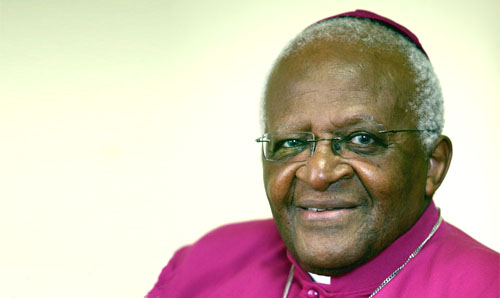 |
| Archbishop Emeritus Desmond Tutu |
The University of the Free State (UFS) will reach a milestone in its history today when an honorary degree, the Doctor of Theology, will be conferred on Archbishop Emeritus Desmond Tutu.
At the same event Archbishop Tutu will launch the university’s International Institute for Studies in Race, Reconciliation and Social Justice.
The idea of the establishment of such an institute originated after the Reitz incident in 2008. In 2009, during his official inauguration, Prof. Jonathan Jansen, Vice-Chancellor and Rector, embodied this idea when he stated that the university would be an example of a place where reconciliation, forgiveness and social justice would not only be studied, but where it would also be applied in practice. “Students and scholars from across the world will come to the UFS to study the theory and practice about the building of societies across the boundaries of race, as well as religion, gender, disabilities and national origin,” Prof. Jansen said.
“The institute is a critical intellectual space where engaged scholarship, public discussion, community engagement and contextually relevant teaching are innovatively harnessed towards exploring and finding solutions to the complex and challenging work of social transformation in South Africa,” says Mr John Samuel, Interim Director of the institute. Mr Samuel was the former Chief Executive Officer of the Nelson Mandela Foundation.
According to Mr Samuel, the institute seeks to establish itself as a premier international site for research on race, reconciliation and social justice. “We want to link the manifestations of race in higher education, to the related matters of reconciliation and social justice in the South African context against the backdrop of racial and ethnic conflicts elsewhere in the world,” says Mr Samuel.
The institute will, amongst others, publish groundbreaking research, organise national and international conferences about reconciliation and social justice, as well as contribute to the establishment of national and international networks that are actively involved in matters relating to race, reconciliation and social justice. Through its research, the institute will endeavour to understand the challenges facing the UFS better, as well as how to address these challenges. For this reason, the concept of the UFS as a “live laboratory” and the use of evidence-based practice remain important for the university.
By honouring Dr Tutu, the UFS recognises the contribution that Dr Tutu has made in the field of Theology through his teachings and the books he has written. However, the UFS is not only honouring him as a moral and religious leader who has maintained his integrity as a Christian. “We honour a great son of South Africa who has made a huge contribution to peace, reconciliation and justice in South Africa and in the world,” says Prof. Jansen.
The unveiling of the new corporative brand of the UFS will render further lustre to the day.
Media Release
17 January 2011
Issued by: Lacea Loader
Director: Strategic Communication (actg)
Tel: 051 401 2584
Cell: 083 645 2454
E-mail: news@ufs.ac.za